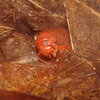ColeopteraC
Arachnobaron
- Joined
- Mar 8, 2020
- Messages
- 425
I was curious as to how she looked after them for I had heard of the incredibly specific care requirements highlighted in your post. I had dismissed the prospect of keeping them, especially now after the information imparted in your post.Maybe I can tell you something about pill millipedes. I am keeping some species of pill millipedes that live in Asia, like Zephronia profuga and Cryxus ovalis.
They are hard to keep. The temperature must be stable at 15~26 degrees,or they will die in several hours.Temperature is the most important key to keep pill millipedes.Of course,humidity is also important.
Have you ever kept beetles? Beetles eat wet decayed wood litter, that`s what pill millipedes mainly eat. You can find it in shops that sell beetles.
Except Decayed wood litter,These pills eat mosses, too. These are the only two things they eat (as far as I know). Smaller species prefer decayed leaf litter,and some bigger species prefer mosses.
As for giant pill millipedes like Zoosphaerium neptunus,they are incredible strict about temperature.You must control the temp in 18~24 degrees. Temp can`t be reached above 24 degrees during transportation,too.
If the temp is too high,the gut flora of millipedes will be destroyed ,pill millipedes depend on them to digest food. If these bacteria die,pill millipedes will die even if they eat something in your house......Things like this will happen to every pill millipedes after a long journey.
And the main problem is: We don’t even know what bacteria are in their organs to help these millepedes digest......
Of course,there are some giant pill millipedes survived successfully, they will eat some special mosses, decayed leaves and some unknown kinds of fungus. I don't suggest you to try your luck like this because many pill millipedes species are near to extinction because of the unrestricted pet trade, include many beautiful species in Southeast Asia and Madagascar.
So,please don`t try to keep giant pill millipedes, Let them live and breed in nature.
If you really want to keep a pill millipedes, please choose some smaller,more common species, they can tolerate higher temperatures up to 26 or 27 degrees,and they don`t eat unknown things, just decayed wood litter. Air conditioners are always needed, there are no pill millipedes that can live until they breed in a temp of 28 degrees or higher.
Thank you.




















